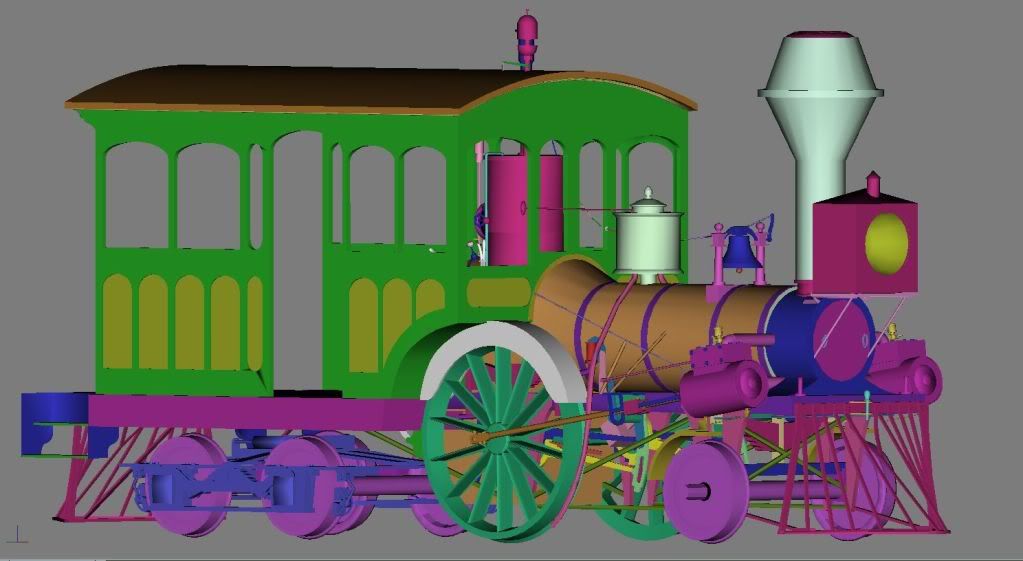I am in the process of building another version of the Jenny Lind. Obviously I still have a ways to go, but getting there. The two images are not exact, but will be when I'm done.
I'm having a difficult time with the interior of this engine. How was the interior laid out? Where did the wood / water go? It did not (appear to) have a tender to store the wood / water, so how did they do it? On the Jenny Lind and Pioneer I released, there is a "bucket" (for the lack of a better term) behind the firebox that contained the necessary wood/water. That "bucket" would pretty much fill the entire area of the cab above, so I know that cannot be correct for this engine.
I'm assuming, (yes, I know), that this engine had an "extended cab" for maintenance or track inspection, or for simply hauling people around(?). It's obviously some kind of utility vehicle.
IF anyone would send images (drawn or photograph) that would better explain the interior, I would appreciate it! May have to take some artistic liberties here, but that's what happens when you do this kind of work.
TB


I'm having a difficult time with the interior of this engine. How was the interior laid out? Where did the wood / water go? It did not (appear to) have a tender to store the wood / water, so how did they do it? On the Jenny Lind and Pioneer I released, there is a "bucket" (for the lack of a better term) behind the firebox that contained the necessary wood/water. That "bucket" would pretty much fill the entire area of the cab above, so I know that cannot be correct for this engine.
I'm assuming, (yes, I know), that this engine had an "extended cab" for maintenance or track inspection, or for simply hauling people around(?). It's obviously some kind of utility vehicle.
IF anyone would send images (drawn or photograph) that would better explain the interior, I would appreciate it! May have to take some artistic liberties here, but that's what happens when you do this kind of work.
TB




